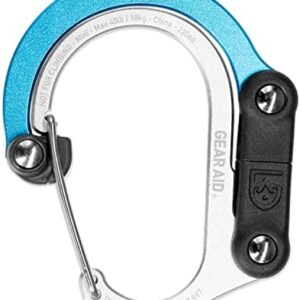Norway, with its breathtaking landscapes and majestic fjords, is a dream destination for nature lovers. But to make the most of this unique experience, it’s crucial to choose the right time to go. In this article, we’ll guide you through Norway’s best fjords, climate, the best season to visit, and sunshine.
Norway’s must-see fjords
Norway is famous for its spectacular fjords, each offering breathtaking views and unique experiences.
Explore the Nærøyfjord
Nærøyfjord is one of Norway’s narrowest and most spectacular fjords. Located in the Sogn og Fjordane region, this fjord is a UNESCO World Heritage Site. Its sheer walls and crystal-clear waters make it a favorite destination for nature lovers and scenic enthusiasts.
A cruise on the Nærøyfjord will allow you to admire impressive waterfalls, picturesque villages, and varied fauna. Hikers can also take advantage of the many trails offering panoramic views of the fjord. Don’t miss this opportunity to discover one of Norway’s most beautiful fjords.
Discover the Sognefjord
Sognefjord, also known as the “King of Fjords”, is Norway’s longest and deepest fjord. Stretching over 200 kilometers, it offers a breathtaking diversity of landscapes, from snow-capped mountains to verdant valleys.
There’s no shortage of things to do around Sognefjord. You can opt for a cruise, kayak trip, or hike to explore the surrounding area. The villages of Flåm and Balestrand are ideal starting points for discovering this majestic fjord. The Sognefjord is a must-see destination for any traveler in search of natural beauty.
Admire Lysefjord
Lysefjord is famous for its breathtaking cliffs and impressive rock formations. Located in Rogaland county, this fjord is particularly famous for the Preikestolen (the “priest’s pulpit”), a rocky plateau offering spectacular views over the fjord.
Thrill-seekers can also attempt to climb Kjerag, another emblematic rock formation in Lysefjord. Whether you choose to hike or cruise, Lysefjord promises breathtaking scenery and unforgettable memories.
Visit Geirangerfjord
Geirangerfjord is undoubtedly one of Norway’s most famous and photographed fjords. Listed as a UNESCO World Heritage Site, this fjord is renowned for its majestic waterfalls, such as the “Seven Sisters” and the “Bridal Veil”.
A cruise on the Geirangerfjord will allow you to admire these natural wonders up close. Hikers can also explore the many trails offering panoramic views of the fjord. The village of Geiranger, at the end of the fjord, is an ideal starting point for discovering this breathtaking region.
Understanding the Norwegian climate
The climate in Norway varies considerably according to region and season. Along the coast, the climate is temperate thanks to the Gulf Stream, which means relatively mild winters and cool summers. Inland and northern regions, on the other hand, experience much harsher winters, with temperatures often below freezing.
Precipitation is another factor to consider. Coastal regions, especially western Norway, can be quite rainy, especially in autumn and winter. However, these same regions enjoy longer, sunnier days in summer, making it an ideal time to visit.
Choosing the best season to visit Norway
The best time to visit Norway depends on what you want to see and do. Summer, from June to August, is the most popular time for Norwegian Fjords cruise. Temperatures are pleasant, days are long and landscapes are lush. It’s also the best time for outdoor activities like hiking and kayaking.
Spring, from May to June, is another excellent time to visit, especially if you want to avoid the crowds. The orchards in bloom on Hardangerfjord are a sight not to be missed. Autumn, from September to October, offers spectacular autumn colors and mild temperatures, although the days are getting shorter.
The importance of sunshine in Norway
The amount of sunshine in Norway varies considerably according to season and latitude. In summer, the phenomenon of the midnight sun in regions north of the Arctic Circle means endless days, ideal for outdoor activities. Winter, on the other hand, brings very short days, especially in the north, with little daylight.
For those wishing to see the Northern Lights, winter is the best time to visit. The long, dark nights offer ideal conditions for observing this spectacular natural phenomenon. However, it’s important to be prepared for cold temperatures and sometimes difficult weather conditions.



![Multi Charging Cable 3A, [2Pack 4ft] Retractable M… Multi Charging Cable 3A, [2Pack 4ft] Retractable M…](https://favoredtravels.com/wp-content/uploads/2024/10/51B3kQaKKnL-300x300.jpg)

